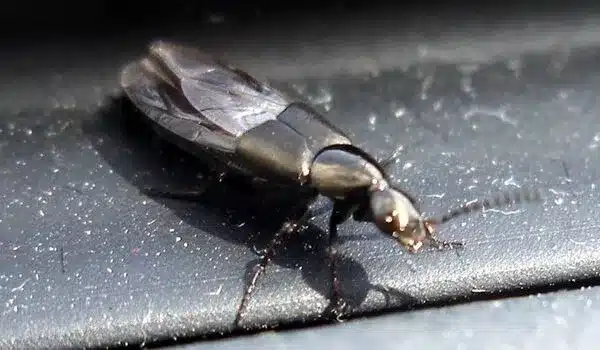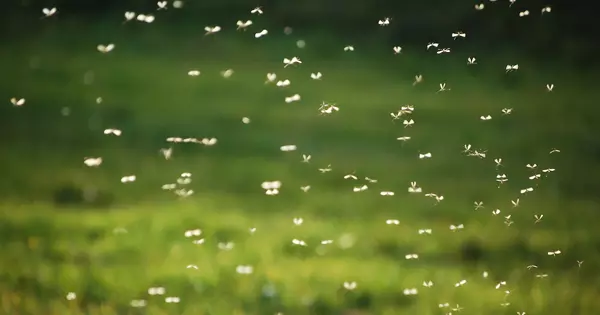Insects are incredibly agile and have evolved over millions of years to navigate complex environments with ease. Many insects are able to avoid collisions with obstacles and other insects by using a combination of visual, auditory, and olfactory cues. This has led researchers to investigate whether we can learn from insects to improve vehicle safety and prevent crashes.
Despite only about 25% of car travel happening after dark, almost half of fatal accidents occur at night. As our vehicles become more advanced and even autonomous, the ways of detecting and avoiding these collisions must evolve too. Current systems are often complicated, resource-intensive or work poorly in the dark. But now, researchers reporting in ACS Nano have designed a simple, power-saving collision detector inspired by the way insects avoid bumping into one another.
One approach inspired by insects is called “event-based vision.” This involves using sensors that only respond to changes in the environment, rather than continuously scanning the surroundings. This approach mimics the way many insects process visual information, allowing them to quickly detect and respond to changes in their environment.
The team designed an algorithm based on the neural circuitry insects use to avoid an obstacle. Instead of processing an entire image, they only processed one variable: the intensity of a car’s headlights. Without the need for an onboard camera or image sensor, the detection and processing units were combined, making the overall detector smaller and more energy efficient.
Numerous collision avoidance systems (CASs) are already included in vehicles, and they can automatically brake when an object gets too close. Some operate by analyzing an image of the space around the car, but in conditions like heavy rain or low light, the image isn’t as clear. To make up for it, complicated signal processors are used to make sense of what is still visible. Another method is to incorporate either radar or LiDAR (light detection and ranging) sensors, but these are difficult to miniaturize and need a lot of power. In the end, these instruments can add unnecessary weight, energy requirements and complications, despite making the vehicle safer.
Another approach is to use biomimetic sensors inspired by insect sensory organs. For example, some insects use tiny hairs on their bodies to sense airflow and vibrations, which allows them to detect the presence of other insects and avoid collisions. Researchers have developed sensors that mimic these hairs, which could be used to detect approaching vehicles or obstacles.

But insects, including locusts and flies, can easily avoid collisions with each other without relying on fancy software or LiDAR, even at night. Instead, they engage certain obstacle-avoiding neural circuits, which are highly efficient and could inspire a next-generation CAS. So, Saptarshi Das and colleagues wanted to create an insect-inspired collision detector adapted to sense vehicles that was effective, safe and consumed less power than its predecessors.
Finally, some researchers are exploring the use of swarm intelligence, which is the collective behavior of a group of insects. By studying the behavior of insects like ants and bees, researchers hope to develop algorithms that can be used to coordinate groups of vehicles and prevent collisions.
First, the team designed an algorithm based on the neural circuitry insects use to avoid an obstacle. Instead of processing an entire image, they only processed one variable: the intensity of a car’s headlights. Without the need for an onboard camera or image sensor, the detection and processing units were combined, making the overall detector smaller and more energy efficient. The sensor was comprised of eight photosensitive “memtransistors” constructed from a layer of molybdenum disulfide (MoS2), organized onto a circuit. It took up only 40 µm2 and used only a few hundred picojoules of energy – tens of thousands of times less than existing systems.
Overall, there are many ways in which we can learn from insects to improve vehicle safety and prevent crashes. By studying the behavior and sensory systems of insects, researchers can develop new technologies that help drivers avoid collisions and navigate complex environments with greater ease.
Finally, in real-life, nighttime scenarios, the detector could sense a potential two-car accident two to three seconds before it happened, leaving the driver with enough time to take critical corrective action. The researchers say that this novel detector can help make existing CASs better and safer.















